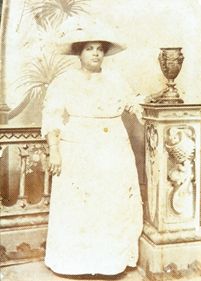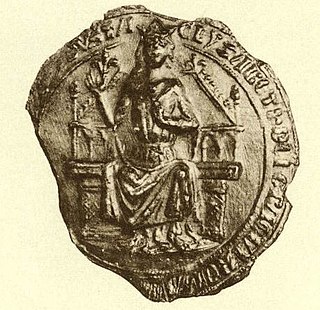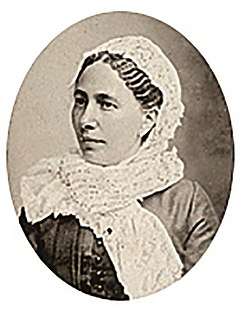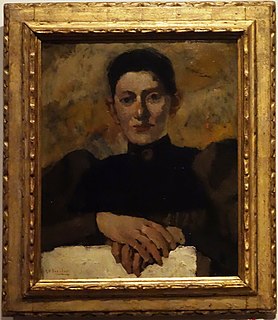
Joan of Valois was a Countess consort of Hainaut, Holland, and Zeeland, by marriage to William I, Count of Hainaut. She acted as regent of Hainaut and Holland several times during the absence of her spouse, and she also acted as a political mediator.

Louise Juliana of Orange-Nassau was a countess consort of the Palatinate by marriage to Frederick IV, Elector Palatine, and took part in the regency government of her son between 1610 and 1614. She also acted as a mediator between the king of Sweden and the elector of Brandenburg in 1631.

Countess Charlotte Brabantina of Nassau was the fifth daughter of William the Silent and his third spouse, Charlotte of Bourbon. She lived in her life at the French royal court and performed many successful assignments as a mediator.

Elisabeth Bas was a business person in the Dutch Republic. She was the spouse of Jochem Hendrickszoon Swartenhont.

Henriette Catherine of Nassau was princess consort of Anhalt-Dessau by marriage to John George II, Prince of Anhalt-Dessau, and regent of Anhalt-Dessau from 1693 to 1698 during the minority of her son Leopold I, Prince of Anhalt-Dessau.
Anna Maria de Bruyn was a Dutch stage actress and ballet dancer.
Susanna du Plessis (1739–1795) was a plantation owner in Dutch Surinam. She is a legendary figure in the history of Surinam, where she has become a metaphor of a cruel and sadistic slave owner. She is the subject of songs, plays, fairy tales and legends as well as books.

Princess Frederica Louise Wilhelmina of Orange-Nassau was a Hereditary Princess of Brunswick; married 14 October 1790 to Hereditary Prince Charles George August of Brunswick-Wolfenbüttel, son of Charles William Ferdinand, Duke of Brunswick-Wolfenbüttel. She was known in the family as "Loulou".

Jurjentje Aukes Rauwerda, later Jurrentje Weinthal, was a Dutch prostitute and procurer. She was famous among members of her profession in the contemporary Netherlands, and ran the largest brothel in Amsterdam, the Maison Weinthal.
De Ploeg is an artist collective from the city of Groningen in the Netherlands. The collective was established in 1918 by a group of young artists. Their goal was to create new opportunities for exhibitions and to educate the general public about developments in art, architecture, and literature. The name was suggested by one of the founding members Jan Altink, because he felt like a lot of ground still had to be broken for modern art in Groningen. Several art styles were prominent within "De Ploeg", including expressionism, constructivism and impressionism. This artist collective still exists, but its most important time lay in the 1920s.

Augusta Cornelia Paulina Curiel (1873–1937) was a Surinamese photographer. She and her sister created an important record of life in the early twentieth century.
Catharina Johanna Koek (1763–1843), was a Dutch governor's wife. She is depicted in history as a typical example of the Dutch colonial customs in Dutch East Indies and how it was viewed by Europeans.
Cornelia van Lalaing, was a Dutch noblewoman, famous for the role she played in the so-called "Rennenberg Treason" in 1579 during the Eighty Year's War.
Marietje Jan de Gortersdochter was a Dutch Anabaptist. She is known in history as a martyr of the Anabaptist faith and the mother of the Anabaptist leader David Joris. She was married to the merchant Joris van Amersfoort. She was executed by decapitation in Delft after banned books had been found among her possessions.

Wilhelmina van Idsinga also Wilhelmina Geertruida of Idsinga, (1788–1819) was a Dutch painter. She was born in Leeuwarden.

Elisabeth of Brunswick-Lüneburg was Queen of the Romans, Countess of Holland, and Countess of Zeeland as the wife of William II of Holland.
Maria Elisabeth Hille (1827–1893), was a Dutch photographer. She was the first professional female photographer in the Netherlands.

Jacoba Rauwerda (1835–1919) was a Dutch brothel manager. She was the owner and manager of the most famous brothel in 19th-century Amsterdam, the Maison Weinthal, between 1877 and 1902.

Elizabeth Sara Clasina de Swart (1861-1951), whose chosen name was 'Saar' de Swart, was a sculptor born to the Dutch painter Corstianus Hendrikus de Swart and his wife, Elisabeth Sara IJntema in Arnhem, Netherlands.
Catharina Petit (1660–1740) was a Dutch stage actor.












